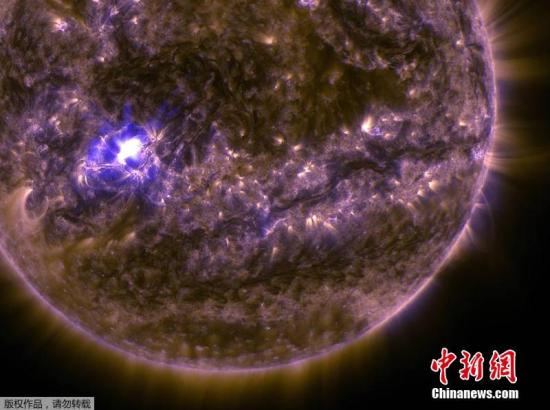China News Service, February 2 According to a report from the Russian Satellite Network on the 2nd, Vladimir Mahmutov, director of the Solar Physics and Cosmic Ray Laboratory of the Institute of Physics of the Russian Academy of Sciences and head of the "Solar-THz" experiment, said: Russian scientists plan to use instruments to be installed on the International Space Station between 2023 and 2024 to start the world's first comprehensive study of solar terahertz radiation, which will reveal previously unknown solar flares.
At 0:22 AM on March 12th, 2013, Beijing time, the Solar Dynamics Observatory SDO captured a huge X2.2 solar flare.
Image source: NASA official website
Mahmutov said: "Under the framework of the'sun-terahertz' experiment, we plan to develop a scientific device that will be able to study radios with wavelengths of 1-10 terahertz emitted by the sun at eight different frequencies. Wave and give detailed information about the terahertz radiation spectrum of our recent stars. Next, using data from related fields, we will be able to plot the full spectrum of solar radiation."
He explained, "From the perspective of studying solar flares, this is extremely important."
Scientists said that despite the existence of a large number of theoretical models, there is currently no accepted theory of the origin of solar flares.
Scientists expect to send the equipment to the International Space Station in 2023-2024.
During a spacewalk mission, astronauts will install the instrument on the outer surface of the space station, which will consist of eight terahertz radiation receivers.
It is expected that the experiment itself will continue to observe the sun for at least 2-3 years.

